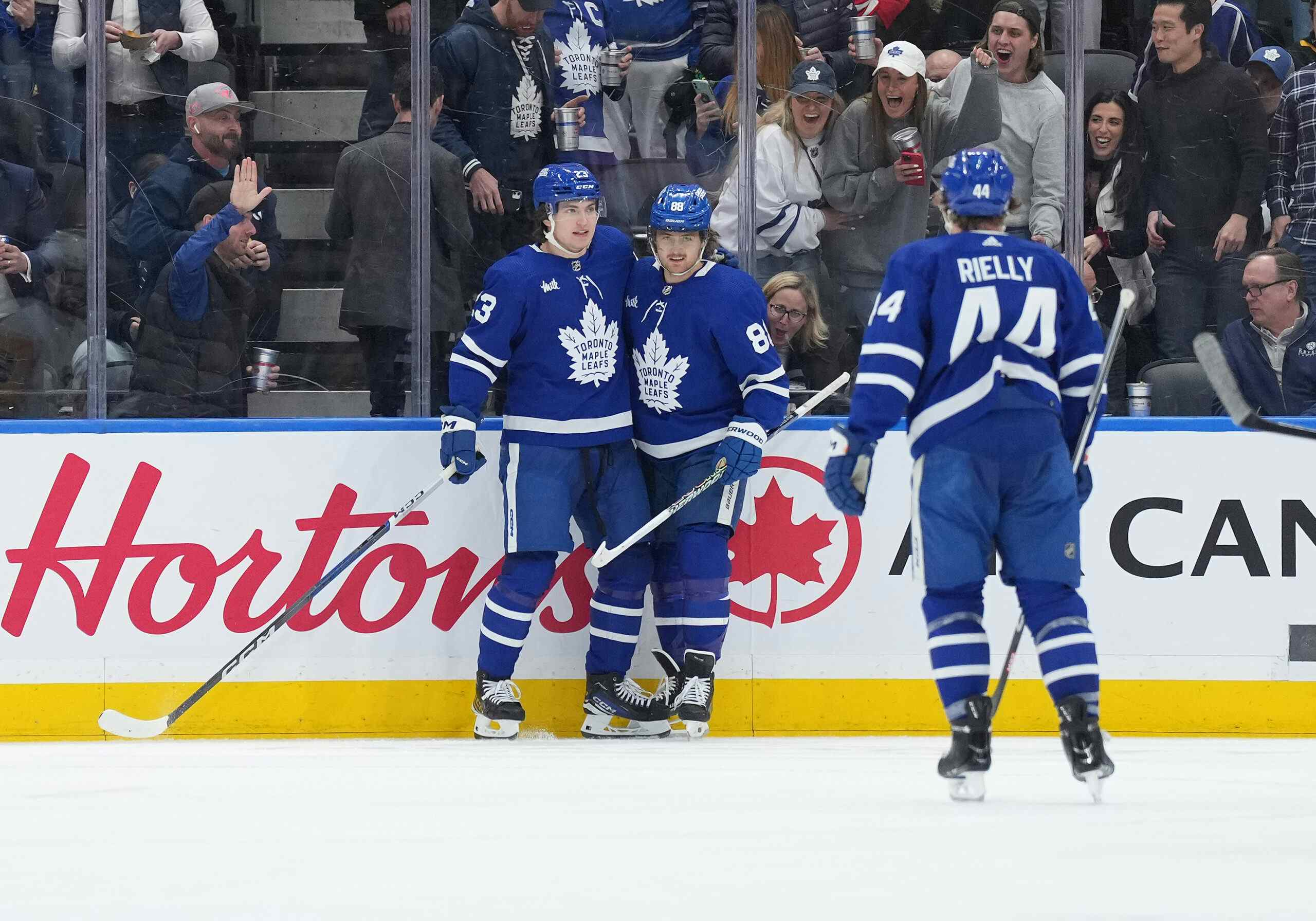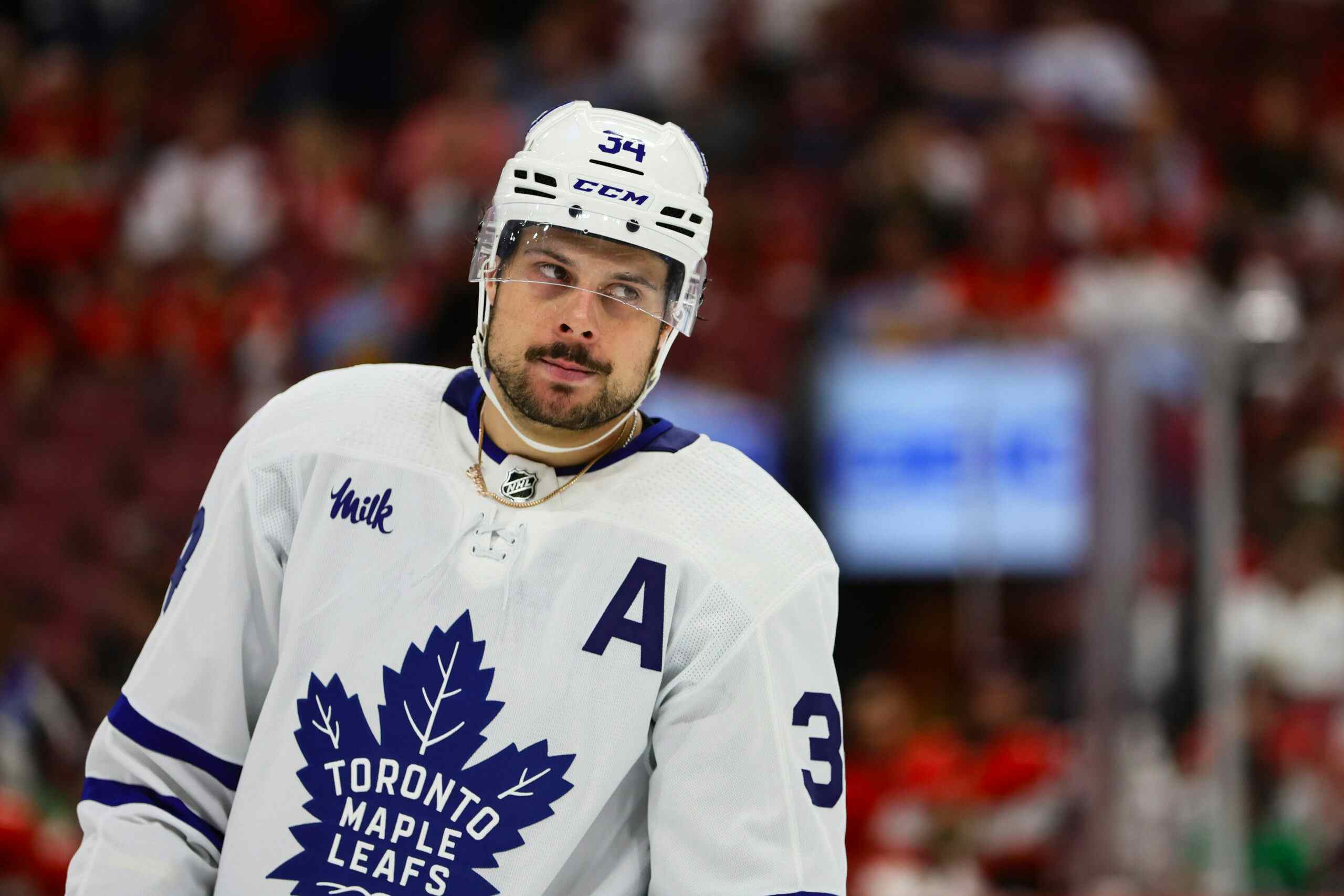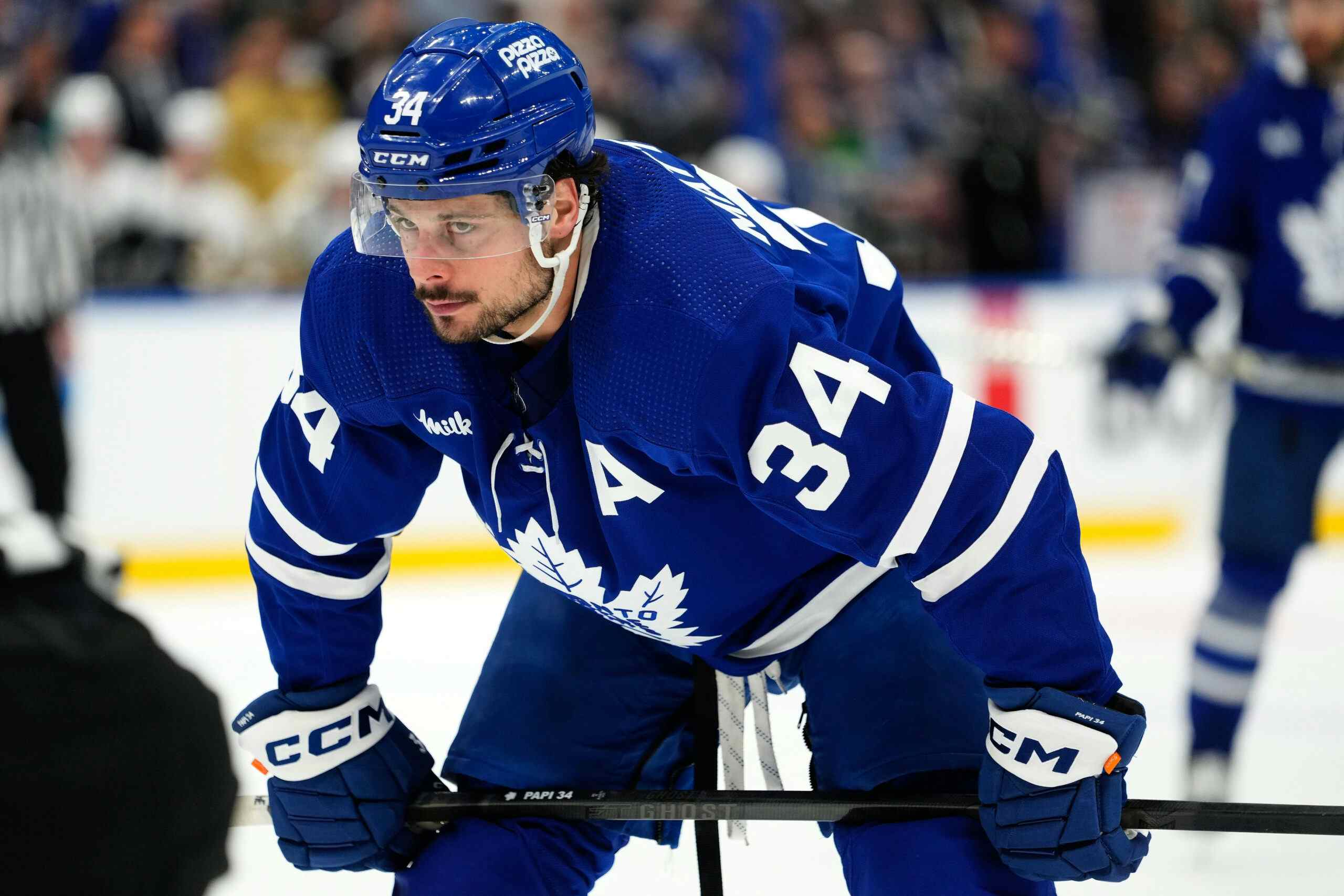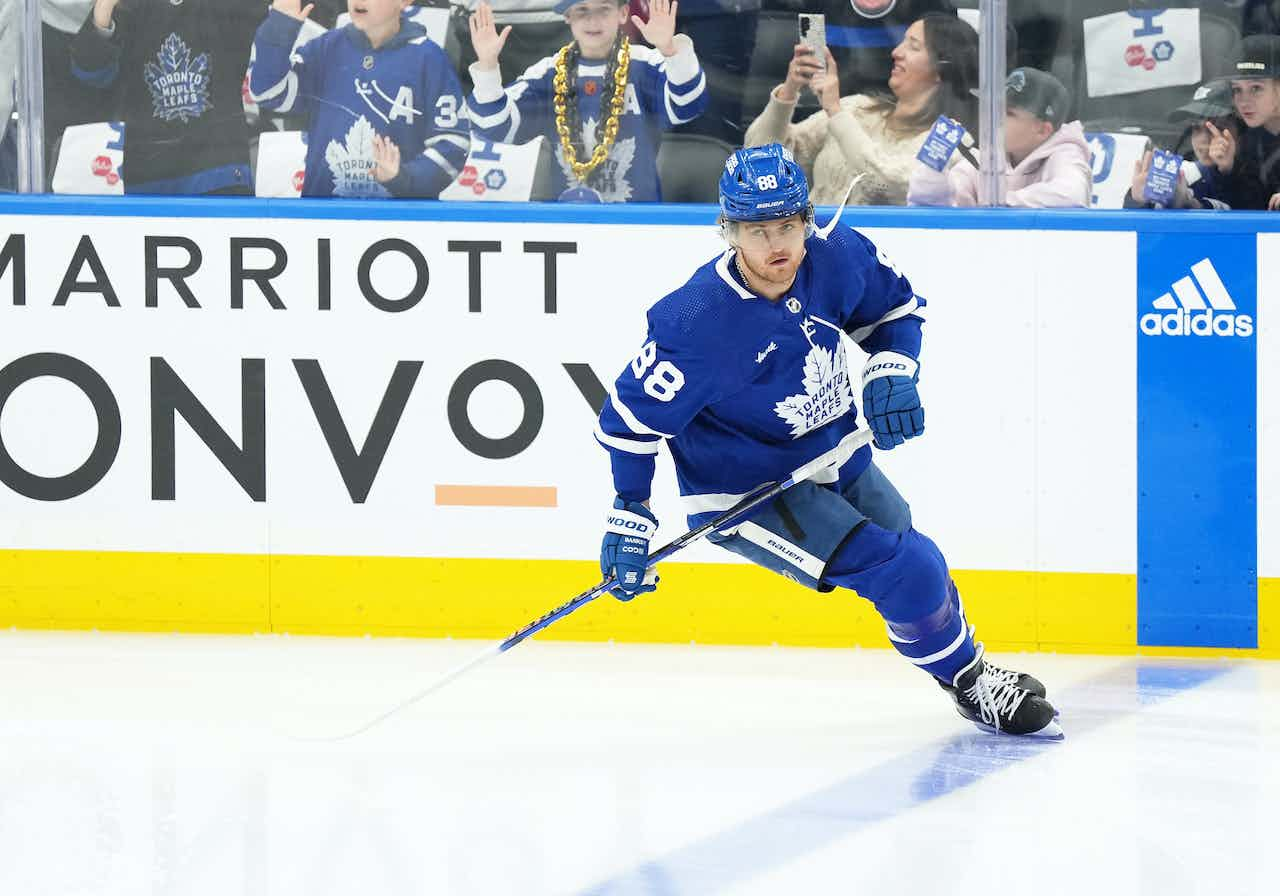Point projections for Leafs players in a 56 game season
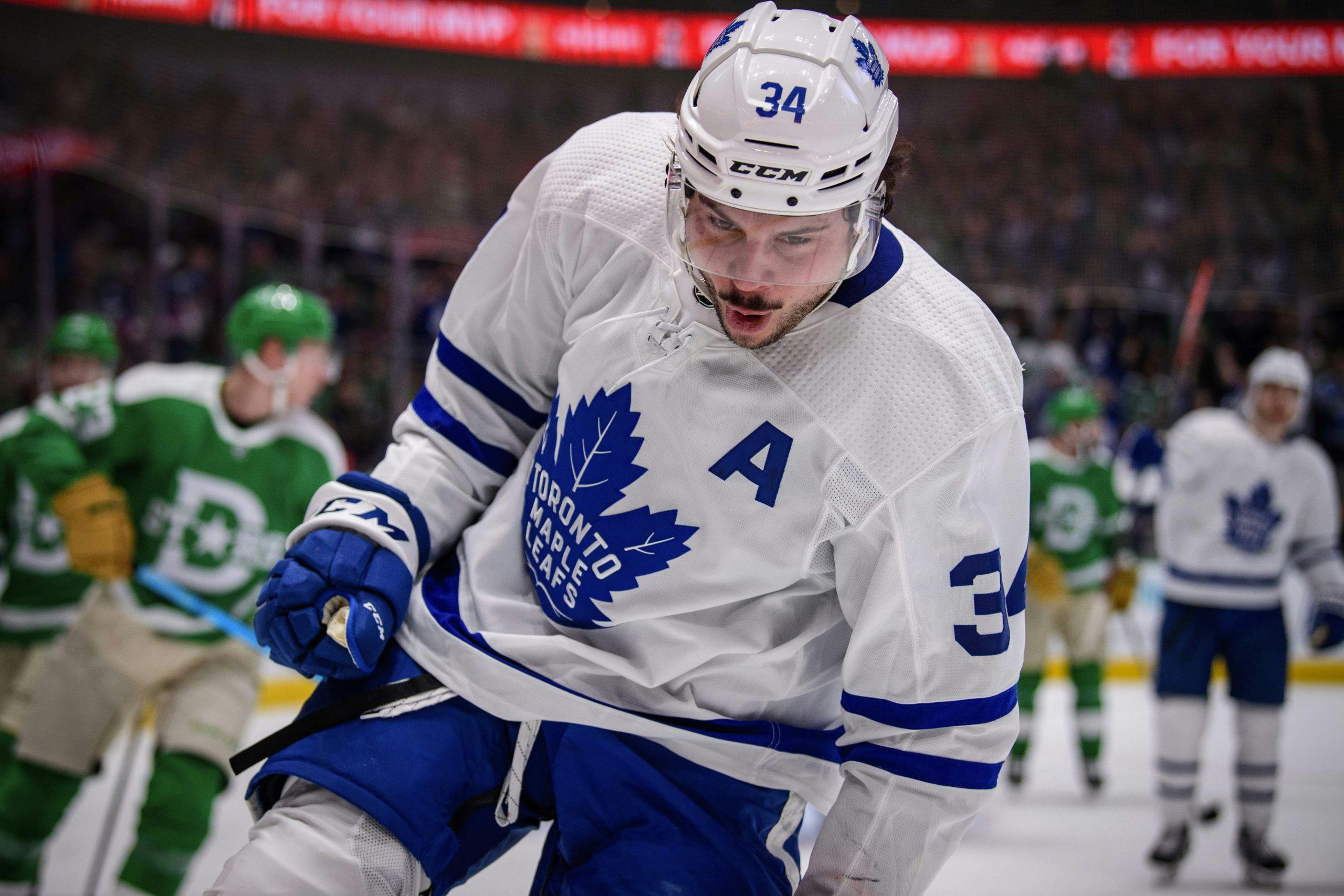
By Nick Richard
3 years agoAuston Matthews was robbed of his first 50 goal season when the league was forced to shut down last March, and while his chances of hitting 50 in a shortened 2021 campaign might be slim, he should once again be in the running for the Rocket Richard Trophy this season. How many goals is Matthews capable of scoring in a 56 game season and can he creep into the Art Ross conversation as well?
William Nylander bounced back in a big way in 2019-2020, hitting 30 goals for the first time in his NHL career and looking increasingly like the dominant player he vowed to become after a disappointing 2018-2019 season. Whether or not Nylander can continue to score at that rate will go a long way towards determining how successful this Leafs team can be.
For the most part, we know what to expect out of some of the marquee players on this Leafs roster but plenty of questions still remain. With the NHL officially set to drop the puck for a 56 game season on January 13th, and the Leafs seemingly finished making moves for the offseason, I thought it might be interesting to see what kind of individual production we should expect from the Leafs’ players in 2021.
These projections will be based on my own analysis of statistical trends for individual Leafs players over the last few seasons, expected roles for players this coming year, and good old fashioned gut feel. This is far from a perfect science and it isn’t based off of any advanced statistical model, but I will explain my reasoning with each projection.
For the sake of simplicity, I am assuming perfect health for these projections. The chances of everyone remaining healthy in a normal year are slim – never mind during a pandemic – but it is next to impossible to predict who might end up on the shelf, and for how long. Under that assumption, I’ve come up with eight forwards who I expect to be regulars in the lineup: Matthews, Marner, Tavares, Nylander, Hyman, Mikheyev, Kerfoot, and Simmonds. On the blue line, the only players who I believe will be in the lineup every night are Rielly, Muzzin, and Brodie.
The Leafs have an abundance of viable depth options and I expect them to utilize that advantage in what is sure to be a condensed, physically taxing schedule. With those regulars in mind, I’ve divided the remaining man games among the players that I expect to rotate in and out of the lineup throughout the season, accounting for how many times I believe the Leafs might dress seven defensemen. Again, there are going to be players who miss time so these games played totals probably won’t be accurate in most cases but the objective here is to get an idea of what we should expect from players on a per game basis, and just how the rotation might shake out in a perfect world.
Perhaps the biggest takeaway from this exercise was just how many games I was able to find for the guys that I considered to be rotational players, even under the assumption of perfect health. Though the taxi squad was only officially announced a few days ago, Kyle Dubas navigated this entire offseason as if the Leafs would be carrying extra players and that depth will be a big factor in whatever success they might have this season. All of the players I’ve listed here, and probably even a couple that I didn’t, are going to play and some of them may even be forced into prominent roles at various points of the season. There is a good chance that players such as Travis Boyd, Joey Anderson, Rasmus Sandin, and perhaps even Timothy Liljegren play games for the Leafs this year too, but they are far more difficult to project given their place on the depth chart when everyone is healthy so they haven’t been included.
@Auston Matthews
| GP | G | A | P |
| 56 | 41 | 32 | 73 |
Matthews was in the midst of a monster season when everything came to an abrupt halt last March and I expect him to once again be the Leafs’ best player in 2021. He has been the best even strength goal scorer in hockey since entering the league, with his 121 even strength goals edging out @Alex Ovechkin and @Connor McDavid despite playing fewer games than both of them. Matthews has a career shooting percentage of 15.7%, with a career high of 18.2% in 2017-2018. After shooting 14.7% on 3.69 shots per game in 2018-2019, he increased both his volume and efficiency in 2019-2020, shooting 16.2% on 4.14 shots per game. I’m basing my projection on Matthews having a similar progression this season with another step forward in his shooting percentage and a slight bump in the amount of pucks he puts on net. If he plays all 56 games, he can hit 41 goals by shooting 17.5% on 4.2 shots per game. That might sound like a tall task but Matthews has already proven capable, scoring his 40th goal of the 2019-2020 season in just his 55th game. Furthermore, a 17.5% shooting percentage would have placed him just inside the top 20 among players who played at least 500 minutes last season so that is also well within his reach. I’ve also projected Matthews to have a small increase in his assist rate, and see no reason to doubt his ability to produce at a 1.3 point per game pace for 56 games.
@Mitch Marner
| GP | G | A | P |
| 56 | 16 | 49 | 65 |
Marner broke out in a big way skating alongside John Tavares in 2018-2019, jumping to 94 points after posting 64 in his sophomore season – a difference of .37 points per game. The duo was electric almost every night in Tavares’ first season as a Leaf and it helped earn Marner a gigantic contract, albeit through a painstaking process. Those very contentious, public negotiations seemed to weigh on Marner last season and he didn’t look like quite the same player as the previous year, at least not on a consistent basis. The scary thing for the rest of the league is that even in what many considered to be an off year for the playmaking winger, he was still playing at a 93 point pace. I think that’s where Marner likely settles in for the prime of his career, with the potential for increased goal production if he takes more shots from high danger areas as he has said he intends to. He should be in line for a big season, playing with Matthews at even strength and on a loaded top power play unit. With a slight bump in his assist rate, and a bit of a decrease in average ice time due to a more condensed schedule, I have Marner playing at a 95 point pace.
@John Tavares
| GP | G | A | P |
| 56 | 24 | 30 | 54 |
His first season as a Leaf was the best of his career, shooting at his highest volume and efficiency since entering the league. Tavares scored on 16.4% of his shots, 3.1% above his career average of 13.3%, and finished with 47 goals in 82 games. It shouldn’t have come as a surprise that Tavares was unable to repeat those numbers last season, especially considering he never seemed to get back to 100% after a finger injury sidelined him in the early part of the season. He shot just a tick below his career average at 13.2% and fired 3.13 shots per game compared to 3.49 shots per game the previous season, finishing with 26 goals in 63 games. I’m projecting him to jump back up above his career average and shoot 13.6% on 3.2 shots per game, finishing with 24 goals in in 56 games. Tavares’ assist rate has been quite stable over his career and he should be able to maintain that for at least this season, finishing with around .54 assists per game.
@William Nylander
| GP | G | A | P |
| 56 | 23 | 27 | 50 |
We’ve seen a few different versions of William Nylander through his first few seasons in the league. In his first two seasons, he was an effective transition player who could create offensive opportunities for himself and his teammates but he did most of his damage from the perimeter. Then came the contract standoff and late start to his 2018-2019 campaign, where he never seemed to really get going despite solid underlying numbers. The 2019-2020 version of William Nylander was an entirely different animal than what we’d seen through the early part of his career as he made a habit of getting to the dirty areas in front of the opposition’s net. In his first two seasons, Nylander generated 2.93 individual high danger shot attempts per 60 minutes in all situations. That jumped to 4.15 iHDCF/60 in 2018-2019 and all the way to 5.23 iHDCF/60 last season, second among all Leafs behind Zach Hyman and just ahead of Matthews and Tavares. As a result, his individual expected goal rate increased from .86 iXGF/60 to 1.01 iXGF/60 and his shooting talent helped him outperform that as he scored 1.5 goals per 60 minutes for the season. His 15.7% shooting percentage might be tough to replicate, even if he continues to generate high danger chances like he did last season so I have him scoring 1.35 goals per 60 minutes and getting back closer to his assist rate from his first two seasons, in what would be a career high 73 point season over a full 82 game schedule.
@Morgan Rielly
| GP | G | A | P |
| 56 | 8 | 35 | 43 |
Much like Tavares, Rielly’s career year in 2018-2019 was going to be difficult to replicate and the fact that he dealt with injuries right from the get go didn’t make it any easier. His on-ice shooting percentage at even strength also took a dip last season, dropping from 12.14% to 9.87% but I expect a healthier, more dangerous Rielly this season will help bump that number back up a bit. His individual shooting percentage for his career is 4.9%, with a career high of 9.0% coming in 2018-2019. Last season’s mark of 2.4% was the lowest since his rookie season, and he should bounce back in that department as well. Maintaining his shot volume from last season in combination with some shooting percentage regression, while reclaiming his spot on Toronto’s top power play unit, should see Rielly play around a 63 point pace.
@Zach Hyman
| GP | G | A | P |
| 56 | 15 | 18 | 33 |
Zach Hyman has increased his goals per game rate in every season of his NHL career, culminating with 21 goals in just 51 games last season. While his shot rate his been fairly consistent in his first four NHL seasons, there has been a noticeable improvement in Hyman’s finishing ability in each of the last two years. While his 19.8% shooting percentage in 2019-2020 is likely unsustainable, the fact that Hyman generates so many of his shots from in close should lead to him maintaining a fairly high shooting percentage. That said, I’ve got him dipping back down to just above 13% this season with a small increase in his assist rate, putting him on pace for 48 points in a full season.
@Ilya Mikheyev
| GP | G | A | P |
| 56 | 10 | 22 | 32 |
Mikheyev fired an average of 2.51 shots on goal per game in his rookie season, but many of those were of the low danger variety. He scored on 8.2% of those shots, finishing with eight goals in 39 games before suffering a scary injury that ended his regular season. I believe there will be a concerted effort from Mikheyev to get to better shooting areas this year, likely leading to a small improvement in his shooting percentage which should counteract a lower overall shot volume. He should also be able to maintain or improve upon his rate of .38 assists per game from his rookie season, especially if he earns an extended look in the top six. If he can produce at a similar rate to last season’s 48 point pace, he will provide plenty of excess value on his $1.645 million cap hit.
@Alexander Kerfoot
| GP | G | A | P |
| 56 | 8 | 18 | 26 |
Kerfoot has had a very unstable shooting percentage in his first three seasons, shooting an unsustainable 23.5% in his rookie season with Colorado, 12.9% in his second season, and then 10.2% in his first season with the Leafs. For the course of his career, he has averaged 1.3 shots on goal per game and he should be in line for a small increase in his shooting percentage from last year. In his final season with Colorado, Kerfoot tallied .35 assists per game but had just .29 assists per game last season. He had a difficult first season in Toronto, between injuries and adjusting to a new environment, but a return to the form he showed in the season prior to being acquired by the Leafs seems plausible.
@Joe Thornton
| GP | G | A | P |
| 49 | 5 | 19 | 24 |
Everybody knows that Joe Thornton is a pass first player and pass first players are going to struggle to produce when they aren’t playing with players that can put the puck in the net. That was the case for Jumbo Joe last season and he had the least productive season he’s had since his rookie year, largely due to a low on-ice shooting percentage. He put up just .34 assists per game, down from .48 per game the season prior, and .55 per game in the two seasons prior to that combined. Considering Thornton will almost surely be playing with more capable scorers in Toronto than he had in San Jose last season, I think a return to the realm of .4 assists per game is within reason.
I debated whether or not to consider Thornton a full time player because I think there’s a good chance he has some choice words for the trainers and coaches when they try to rest him, but the fact remains that he is 41 years old so I think he’ll be given a few nights off through the course of this 56 game sprint. But even at his advanced age, I think Thornton still has something left in the tank and he’ll be eager to contribute to his new squad as he pursues another shot at Lord Stanley’s mug.
@Jake Muzzin
| GP | G | A | P |
| 56 | 5 | 17 | 22 |
Muzzin has solidified the Leafs’ blue line with his rock solid defensive play since coming over in a trade from the Los Angeles Kings, but he has been a productive offensive player from the back end as well. Through his first 83 games with the Leafs, he has scored 11 goals and 28 assists with a 6.8% shooting percentage and assist rate of .93 per 60 minutes at even strength. Muzzin shot just 4.8% in his eight seasons with the Kings so a bit of regression should be expected in that department, but he should be able to maintain his high assist rate playing big minutes with the Leafs’ best offensive players. With the newly acquired Mikko Lehtonen and TJ Brodie in the fold, Muzzin’s power play opportunities are likely to be scarce and it might cut into his overall production a bit but a 32 point pace is nothing to scoff at for a player who impacts the game on the other side of the puck the way he does.
@Wayne Simmonds
| GP | G | A | P |
| 56 | 9 | 12 | 21 |
Simmonds hasn’t been quite the same player in the last couple of years that he was during his prime years in Philadelphia, and I wasn’t sure if I should consider him as a full time player but I think an injury is the only thing that would knock him completely out of the lineup so I put him down for 56 games under the assumption of perfect health. Last season was a slog for Simmonds, shooting a career low 6.7% and scoring just .24 goals/60 on .6 iXGF/60 at even strength with the Devils before being traded to the Sabres at the deadline. Simmonds’ career shooting percentage of 12.7% is almost double his mark from last season and from 2016-2017 to 2018-2019 with the Flyers, he scored .72 goals/60 on .77 iXGF/60. A modest rebound in the finishing department should be expected for Simmonds, even if he can’t generate as many chances for himself as he once could.
TJ Brodie
| GP | G | A | P |
| 56 | 4 | 17 | 21 |
Brodie’s assist rate at even strength has remained fairly stable over the years with Calgary, but I expect a small surge in that department this year as he plays most of his even strength minutes with some of the Leafs best offensive players. His shot volume has fluctuated over the years but he is player that prefers to make a play to one of his teammates if at all possible, so I think a projection of about 1.1 shots on goal per game is reasonable. Brodie might not shoot much, but he has been fairly efficient over his career with a 6.3% shooting percentage from the back end. His career high came in 2018-2019 when he shot 8.8% and scored nine goals, but I think something closer to his career average is a safer projection. Toronto’s big name addition on the blue line is a strong puck mover and will be a fixture in their top four, while likely having first crack at quarterbacking the second power play unit when Mikko Lehtonen isn’t in the lineup. I’d have pegged him for a few more assists if I didn’t think Rielly would be the primary puck mover on his pairing.
@Mikko Lehtonen
| GP | G | A | P |
| 43 | 5 | 12 | 17 |
Lehtonen was one of the most difficult players to project, given his unique career path and the fact that all we really have to go on is his KHL production from the last couple of seasons. He has played 83 KHL games in the last two seasons, firing a total of 267 shots on goal for an average of 3.2 per game and scoring on 9.7% of them. For reference, Morgan Rielly shot 9.0% two seasons ago when he scored 20 goals. In other words, expecting Lehtonen to score at the same rate he did in the KHL is setting yourself up for disappointment. His shot is a legitimate weapon, however, and he should still be able to pot a few goals even with decreased shooting output and efficiency. Lehtonen is also unlikely to maintain his rate of .5 assists per game from the KHL, but could exceed my projection of .28 per game if he is able to secure a top four job alongside Jake Muzzin. Expectations are sky high for the reigning KHL Defenseman of the Year but if he’s able to produce at my projected rate of 32 points over an 82 game season in his first NHL campaign, that would be a win for the Leafs.
@Travis Dermott
| GP | G | A | P |
| 50 | 3 | 13 | 16 |
Last season wasn’t quite the leap forward that Dermott had hoped to take, despite continuing to put up impressive underlying numbers. His assist rate dropped from .7 assists per 60 minutes in 2018-2019 to just .43 assists per 60 minutes last season but I believe this is the year that Dermott establishes himself as a reliable top four defenseman, and in turn sees an increase in his offensive production. I have him pegged for an increase in ice time as he eats into Justin Holl’s role from last season, and I believe he will not only return to his assist rate from the 2018-2019 season, but he will improve upon it. At the end of the day, Dermott’s true value is always going to be centered around his defensive contributions.
@Nicholas Robertson
| GP | G | A | P |
| 34 | 8 | 7 | 15 |
This was another tricky one but if I was able to find 34 games for Robertson without anyone missing time, I think it’s safe to assume that he’ll get into his share of games this season. His monster OHL season has been well documented and though his shot is definitely good enough to beat NHL goaltenders, the chances of him replicating the 5.5 shots per game and 21.6% shooting percentage he put up in Peterborough last season are slim to none. However, he was a bit shot happy in his first four NHL contests last summer and fired 8.7 shots on goal per 60 minutes at all strengths. I believe he’ll become more selective in where he fires pucks from as he gets more comfortable with NHL pace and spacing but I’ve still got him projected to generate 7.9 shots on goal per 60 minutes while averaging around 13:00 of ice time per game. That would put him around 58 shots over 34 games and with his high end shooting ability, I believe he is capable of converting on at least 13% of those attempts in his rookie season.
@Jimmy Vesey
| GP | G | A | P |
| 43 | 7 | 8 | 15 |
Vesey could be in the running for spot duty in Toronto’s top six but, for the long haul, I expect him to take most of his shifts on the third or fourth line. He shot 12.3% on about 1.7 shots per game during his three seasons with the Rangers, but dropped to 9.7% on about 1.5 shots per game with Buffalo last season despite his two most common linemates being @Jack Eichel and @Marcus Johansson. Maintaining his shot volume from the last few seasons and getting back above 10% shooting seem like probable outcomes, even if he’s unable to secure a top six role.
@Justin Holl
| GP | G | A | P |
| 52 | 2 | 12 | 14 |
Holl established himself in the Leafs’ top four last season, forming a shutdown pairing with Jake Muzzin. Things didn’t go as well for Holl when he wasn’t playing with Muzzin and I think there is a strong chance that Travis Dermott and/or Mikko Lehtonen eat into his playing time and offensive opportunities in 2021. He is a nice story and a capable NHL defenseman, but I believe the Leafs have more talented options that will surpass him on the depth chart this season. Holl will still be an important part of Toronto’s defensive unit but his name isn’t likely to appear in the box score very often.
@Alexander Barabanov
| GP | G | A | P |
| 37 | 6 | 7 | 13 |
Like Lehtonen, Barabanov is difficult to project because of his age and the fact that he has yet to play a professional game in North America. During his best season in the KHL in 2018-2019, he scored .29 goals per game on 2.4 shots per game to go along with .5 assists per game but his production diminished last year as the quality of his team decreased. He has shot between 11.5% and 12.8% over his last three KHL seasons while maintaining a consistent shot rate, and I believe he will be able to convert at around a 10% clip in his first NHL stint while still generating about 1.6 shots per game.
@Jason Spezza
| GP | G | A | P |
| 30 | 4 | 7 | 11 |
Spezza’s first season with the Leafs was something of a revival for the veteran forward, and he improved his assist rate to 1.53 per 60 minutes after hovering just above 1 assist per 60 minutes in the previous two seasons with Dallas. His shooting percentage also saw a return to form and he scored on 12.3% of his shots with the Leafs after shooting just 5.8% in 2017-2018 and 6.6% in 2018-2019. With all of the additions to Toronto’s forward group, the aging Spezza is likely in line for a lesser role than the one he had last season and I think his shot output and overall production will likely decrease as well.
@Pierre Engvall
| GP | G | A | P |
| 22 | 4 | 3 | 7 |
Engvall entered the league early last season and went on a shooting tear but cooled off significantly after that hot start. The former seventh round pick shot 11.1% on approximately 1.5 shots per game in his first NHL stint, and I think something close to those numbers seems probable again this season. The biggest change here is where I believe Engvall falls on the depth chart, having already been surpassed by Nick Robertson last summer. The Leafs having the ability to bury most of Engvall’s cap hit by placing him on the taxi squad is significant as well, considering he is not yet subject to waivers.
@Zach Bogosian
| GP | G | A | P |
| 32 | 0 | 6 | 6 |
Not much to see here. Bogosian has never really been a big offensive producer, especially in recent years, but that’s not why he was brought in either. He did pick up 4 assists in 20 playoff games on the way to a Stanley Cup victory with the Lightning last season and he will likely rack up a handful with the Leafs this season as well.
(Statistics from NaturalStatTrick.com, Evolving-Hockey.com,
Hockey-Reference.com, ontariohockeyleague.com,
en.KHL.ru, & theahl.com)
(Contract information from PuckPedia.com)
Recent articles from Nick Richard

